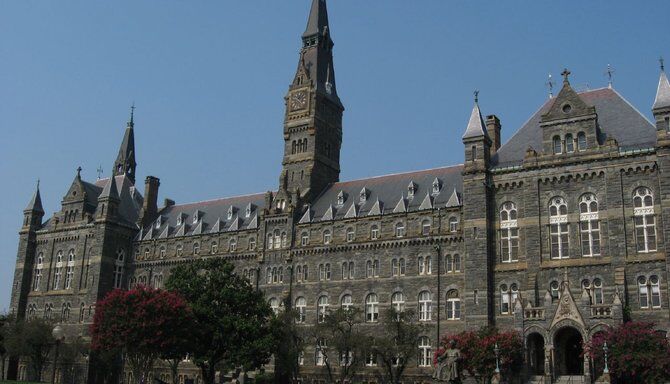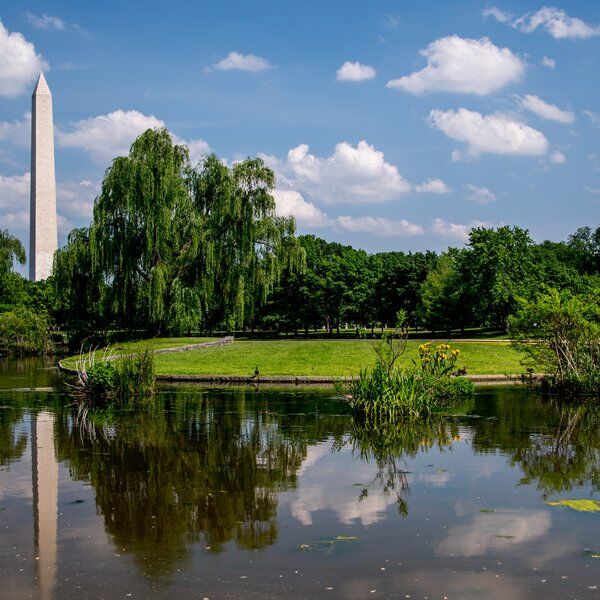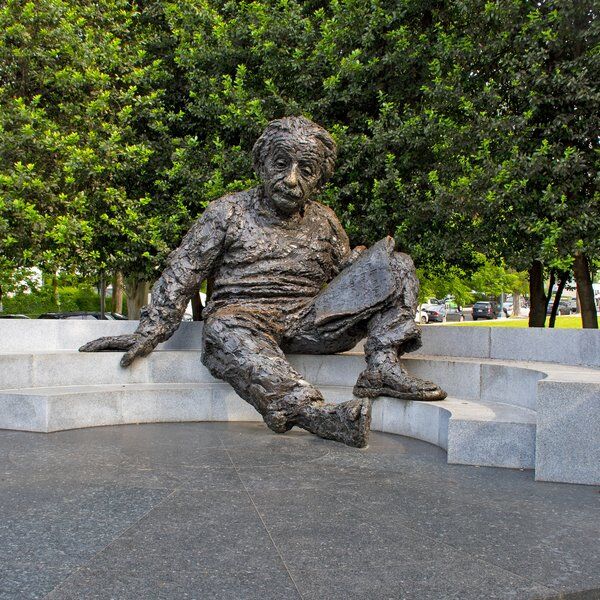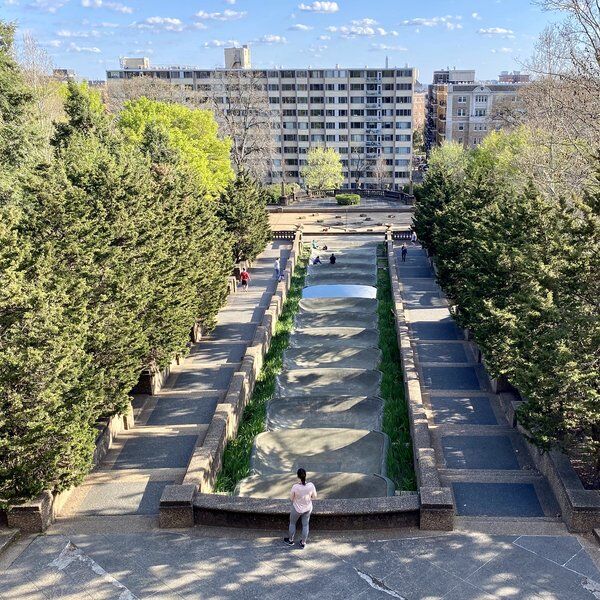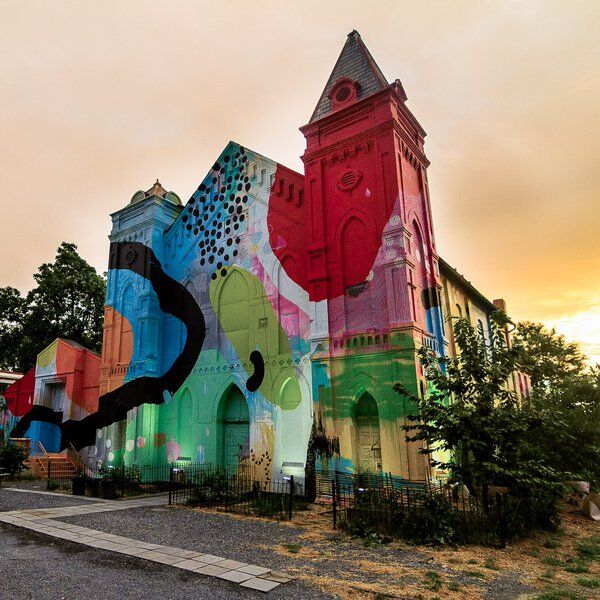Discover the Riggs Library
Step back in time to an era when academia met architectural pizzazz—welcome to the legendary Riggs Library. This iconic book shrine, nestled in Georgetown University’s historic Healy Hall, has grown from modest beginnings into a renowned repository of first collections and rare texts. Today, the library is listed on the District of Columbia Inventory of Historic Sites, the National Register of Historic Places, and designated a National Historic Landmark, highlighting its contributions to Georgetown’s centuries-old scholarly tradition.
But Riggs Library isn’t just about quiet reading and academic rigor; it’s also a stage for quirky traditions and campus lore. From secret student pranks to whispered tales of restricted access in its early days, the library has long held a mystique that captures the imagination of every Georgetown Hoya.
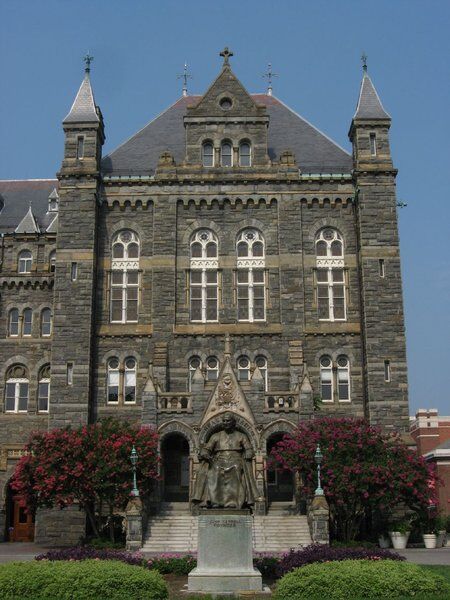
The History of the Riggs Library
The Vision for Georgtown University
It all began when Patrick Francis Healy assumed the presidency of Georgetown University in 1873 with a grand vision: to transform the college into a remarkable university. Inspired by calls for a great Catholic institution that could rival the giants of American learning, Healy knew the school needed more than just fresh curricula—it needed brand-new physical spaces. In 1874, along with fellow Jesuit Joseph Keller, he decided that expanding the campus facilities was a must, and soon the plan to build one grand complex, took shape.
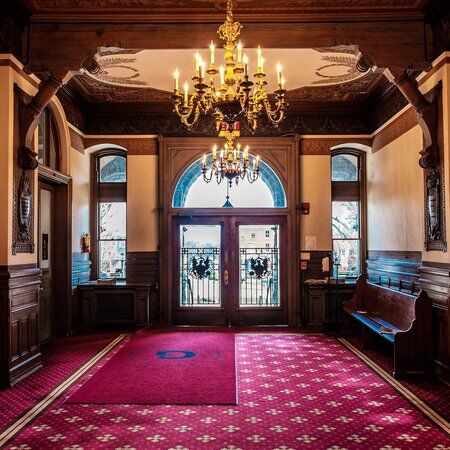
Designing the University
Healy first toyed with ideas from a New York church architect but quickly opted for local talent. In the fall of 1874, he brought on board John L. Smithmeyer and his associate Paul J. Pelz—yes, the same visionary who had a hand in designing the Library of Congress!
Their design for the new building, conceived to face the vibrant city of Washington instead of the calm Potomac, was groundbreaking. Submitted by December 1875 and tweaked for approval in Rome by early 1877, the grand plans called for a structure measuring a whopping 312 feet in length and 95 feet in width.
Despite some initial hesitations over cost and dormitory space, the project was given the go-ahead with a cap on expenses—approximately $100,000 back then (nearly $3 million today).
From Blueprint to Book Repository
Construction kicked off in April 1877 with groundbreaking fervor, and by October, the foundation was solidly in place. Between 1877 and 1879, this visionary project dramatically boosted Georgetown’s facilities, even serving as temporary dorms for students until later years. Although the grand auditorium—now known as Gaston Hall—had to wait until 1909 due to budget constraints, the library itself quickly became a beacon of scholarship.
Originally, Riggs Library was envisioned as a modern library facility to celebrate Georgetown’s centennial and to honor the memory of Elisha Francis Riggs’ father and brother. With its fireproof construction materials—masonry walls, cast-iron shelves, and terracotta tile floors—the library was designed to safeguard treasured volumes for generations.
For decades, it served as the university’s main library until a larger facility took over in the 1970s, allowing Riggs to evolve into an event space.
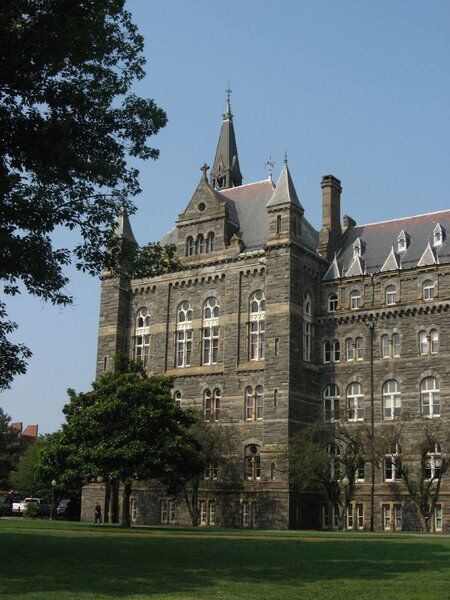
Collections at the Riggs Library
Over time, Riggs Library not only grew as a repository of books but also took on an almost mythical status at Georgetown. Throughout the years, its collections skyrocketed thanks to generous donations from alumni, renowned scholars, and even international benefactors.
In its heyday, Riggs Library housed an extraordinary collection of first editions, 18th-century prayer books, Chinese dictionaries, and rare Italian texts from the Renaissance. Though its role as the main library concluded in the 1970s with the opening of Lauinger Library, Riggs still houses books and remains a favorite venue for formal events and academic gatherings.
The library’s evolution wasn’t just in its collections; it also witnessed dynamic shifts in its role on campus. Initially accessible only to select students and faculty, the access rules gradually loosened, transforming Riggs into a space where the entire Georgetown community could gather and study.
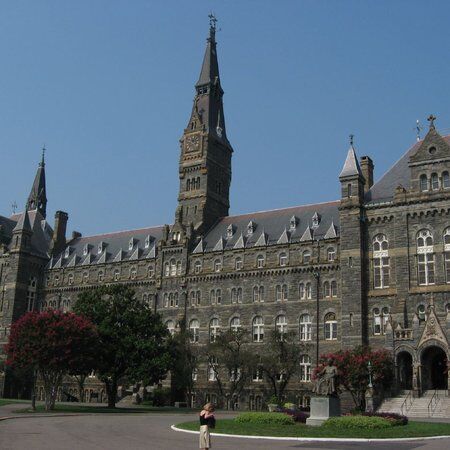
Riggs Library Architecture
Riggs Library finds its home in the third floor of Healy Hall—a building celebrated not only for its administrative functions but also for its rich architectural details. Healy Hall’s design is a blend of Neo-Romanesque and High Victorian Gothic styles, and it houses several other intriguing spaces such as the Philodemic Room, the grand Hall of Cardinals, and the historic Constitution Room.
The library boasts four stories of ornate cast-iron walkways arranged around a sunlit central court. Sixteen imposing columns divide these corridors into smaller, intimate alcoves and two elegant spiral staircases connect the various levels, inviting visitors to take a leisurely ascent (or descent).
Perched in this historic setting, the Riggs Library offers breathtaking views down to the Potomac River. It is a quiet nook for contemplation and scholarly pursuits.
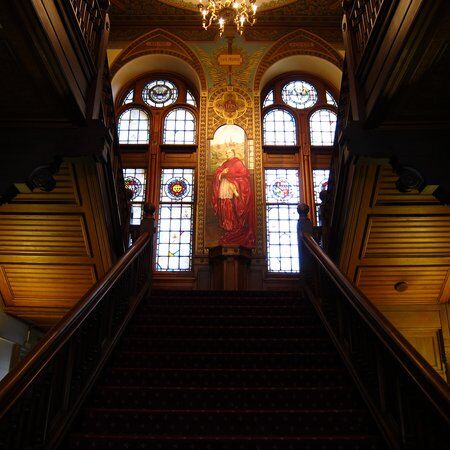
Visiting the Riggs Library
If you're planning a visit to Georgetown University, you might be eager to step inside the famed Riggs Library. However, there’s a twist: the Riggs Library isn’t generally open to the public.
Know Before You Go
- Exclusive Use: Riggs Library is managed by the Georgetown University President’s office and is primarily used for high-level, university-sponsored events and functions. This means that regular public access is restricted.
- Visitation Policy: While you won’t find the doors open for casual browsing like at other libraries, you might be able to make an appointment or attend a special event.
- Limited Public Engagement: Some items from the Riggs Library may even be available electronically—just check with the library staff for potential digital access. But remember, as a prestigious and historic space, Riggs is not a drop-in destination for a leisurely tour.
How to Make a Request
If you’re a scholar or a curious soul wanting to access something from Riggs Library, you can complete the retrieval request form on HoyaSearch. Once your request is processed, your desired items can be delivered to either Lauinger Library or the Blommer Science Library, where they’ll be held for a short period. It’s a service designed to ensure that Georgetown’s treasured collections remain both preserved and accessible to those with genuine academic or research needs.
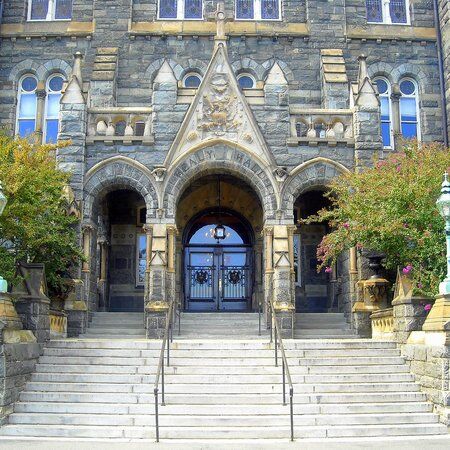
Explore Beyond the Riggs Library with CityDays
Inspired by the rich history and unique charm of Riggs Library? With CityDays, the adventure continues! Our interactive scavenger hunts and treasure trail tours are the perfect way to unlock the hidden gems of Washington, D.C.—and beyond.
All you have to do is team up with your friends, family or whoever to solve riddles, complete challenges and answer trivia to lead you on an unforgettable journey around Washington's most intriguing streets.
The best part? We’ll recommend top-rated bars, cafés and restaurants and give your team the chance to earn rewards by competing on our leaderboard.
CityDays gives you total freedom to start and finish whenever you like, take extra breaks if you want or need them, and it’s suitable for people of all ages.
You’re also guaranteed your money back if you don’t have an amazing time - although our previous reviews speak for themselves: we’re rated 5/5 on TripAdvisor and 4.95/5 on Google Reviews!
